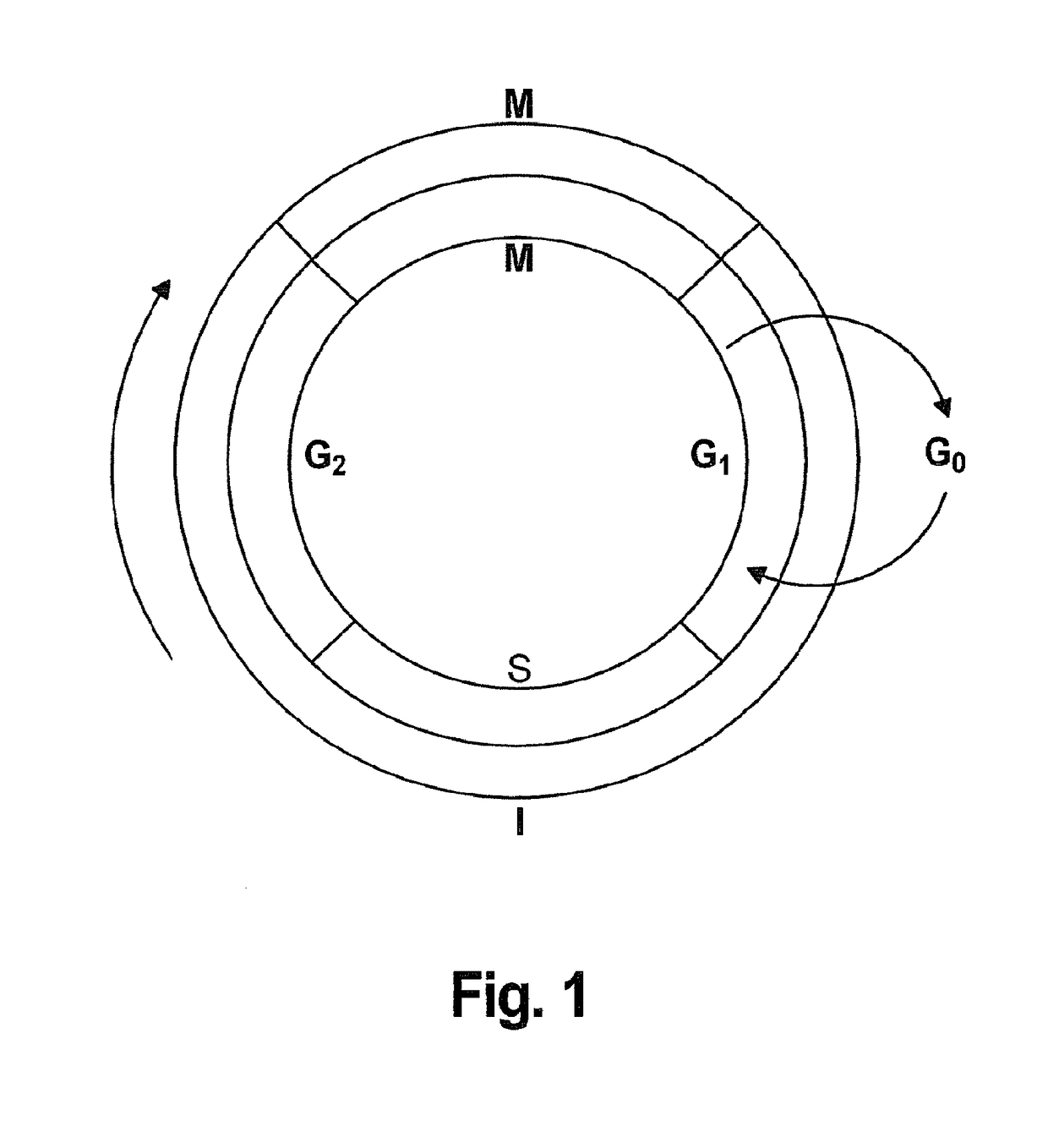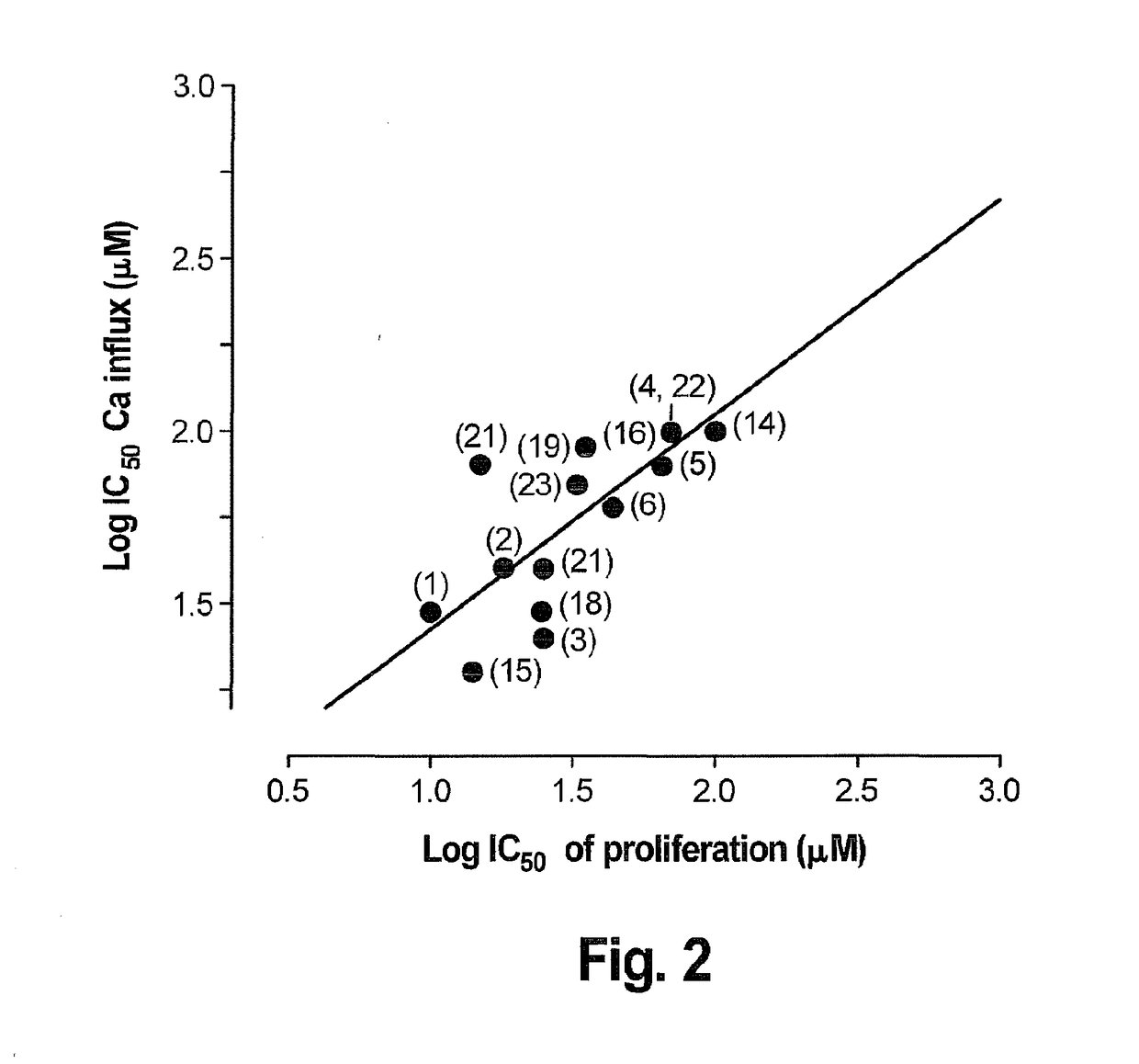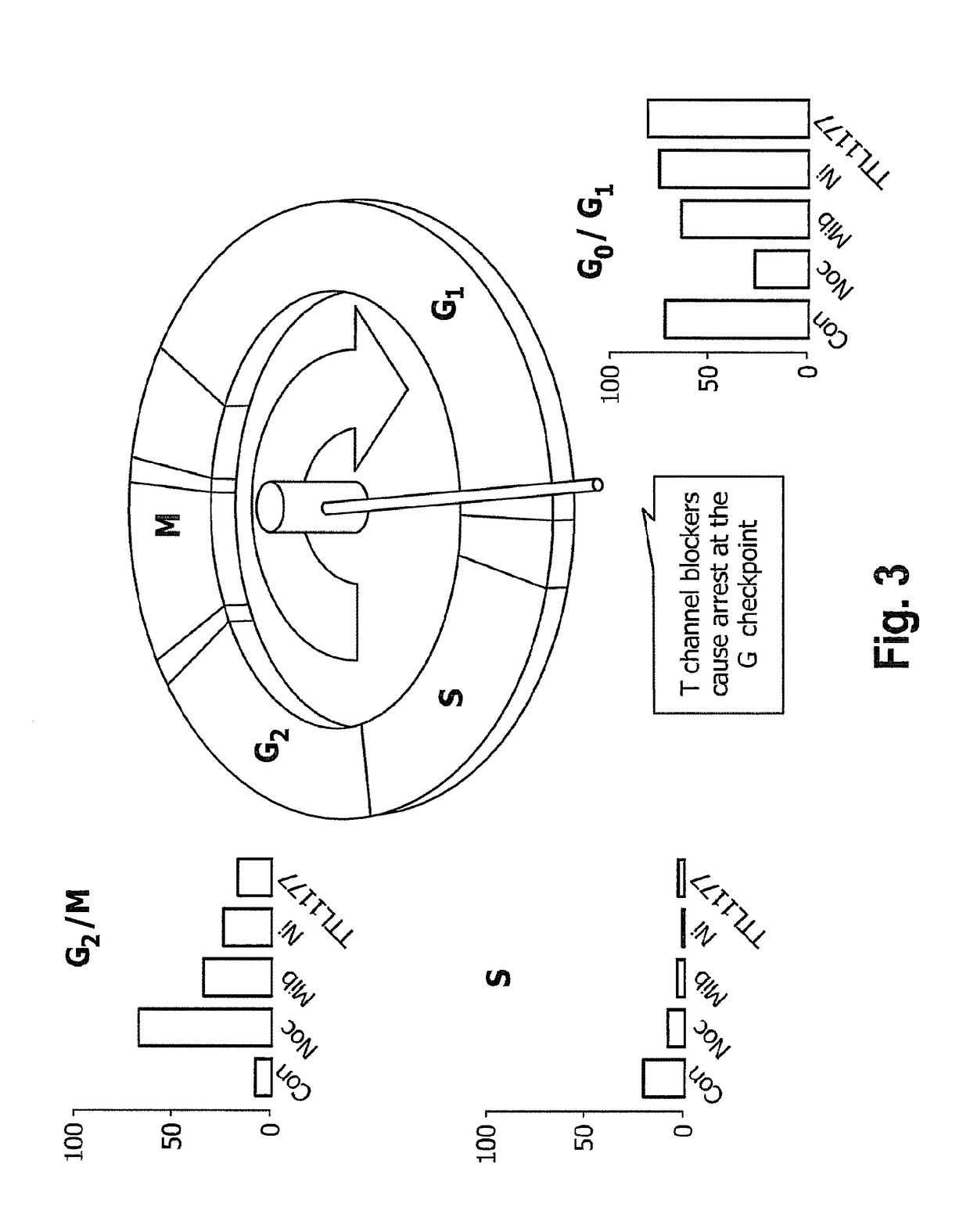Interlaced Method for Treating Cancer or a Precancerous Condition
a cancer or precancerous disease technology, applied in the field of interlaced methods for treating cancer or a precancerous disease, can solve the problems of less effective against a population of cells representing all cell cycle phases, and large doses of harmful drugs, so as to increase the proportion of eukaryotic cells, the effect of slowing or stopping the progression
- Summary
- Abstract
- Description
- Claims
- Application Information
AI Technical Summary
Benefits of technology
Problems solved by technology
Method used
Image
Examples
example 1
[0034]To measure the correspondence between calcium influx inhibition and progression or proliferation, the ability of several chemical agents to inhibit calcium influx was plotted against the ability of the same agent to inhibit proliferation, as can be seen in FIG. 2 below. These agents were proprietary chemical entities synthesized at the University of Virginia. A least squares correlation line with a slope of 0.98 and R2 value of 0.92 was obtained. Conventionally, a correlation cannot be used to infer causality, but in this case, a Bayesian approach is warranted because calcium influx is necessary a priori for proliferation, such that blocking calcium entry will correspondingly block proliferation. A regression line with a slope very near 1 means that essentially all of the variation in the variables is accounted for by variation in the other, meaning that there is no action of these agents on proliferation other than inhibition of calcium entry.
example 2
[0035]Cell cycle analysis was performed using flow cytometry and BUdR staining. In FIG. 3, “Con” represents untreated, control cells. All other cell cultures were treated with nocodazole, which interferes with microtubule polymerization and blocks the cell cycle during M phase. Treatment of A10 cells with nocodazole alone blocked cell cycle transit through M phase as determined by flow cytometry. Because A10 cells reside primarily in the cell cycle checkpoint between G0 and G1 (See “Con” in FIG. 3), evaluating the possibility that a pharmacologic agent inhibits transit out of that phase is not as straightforward as determining blockade at other cell cycle checkpoints. Therefore, cell cultures were treated for 24 hours with T channel calcium channel blockers mibefradil (mib), nickel (Ni) or TTL-1177 (a proprietary compound owned by the assignee Tau Therapeutics), before adding nocodazole. Absent an effect on the T channel blockers, cells would be locked at the cell cycle checkpoint b...
example 3
[0036]Pancreatic cancers resected from patients were immediately transplanted into the flanks of nude mice and maintained by serial, in vivo passage. Transplanted tumors were implanted at a volume of about 100 mm3 and allowed to grow to 200 to 300 mm3 before initiation of treatment. Mice bearing the PANC 219 tumor were either left untreated or treated with mibefradil at 65 mg / kg p.o. b.i.d. (n=10 in each group). Tumor growth was normalized to the size measured at the start of treatment. These results are shown in FIG. 4. One mouse in the treatment group died on day 9 (D9) as indicated by the arrow in FIG. 4. Distinct from conventional chemotherapeutic drugs, treatment with T type calcium inhibitors did not cause tumor regression. Treatment, instead, controlled tumor growth, by arrest of tumor cells at G1 / S.
PUM
| Property | Measurement | Unit |
|---|---|---|
| volume | aaaaa | aaaaa |
| volume | aaaaa | aaaaa |
| volume | aaaaa | aaaaa |
Abstract
Description
Claims
Application Information
 Login to View More
Login to View More - R&D
- Intellectual Property
- Life Sciences
- Materials
- Tech Scout
- Unparalleled Data Quality
- Higher Quality Content
- 60% Fewer Hallucinations
Browse by: Latest US Patents, China's latest patents, Technical Efficacy Thesaurus, Application Domain, Technology Topic, Popular Technical Reports.
© 2025 PatSnap. All rights reserved.Legal|Privacy policy|Modern Slavery Act Transparency Statement|Sitemap|About US| Contact US: help@patsnap.com



